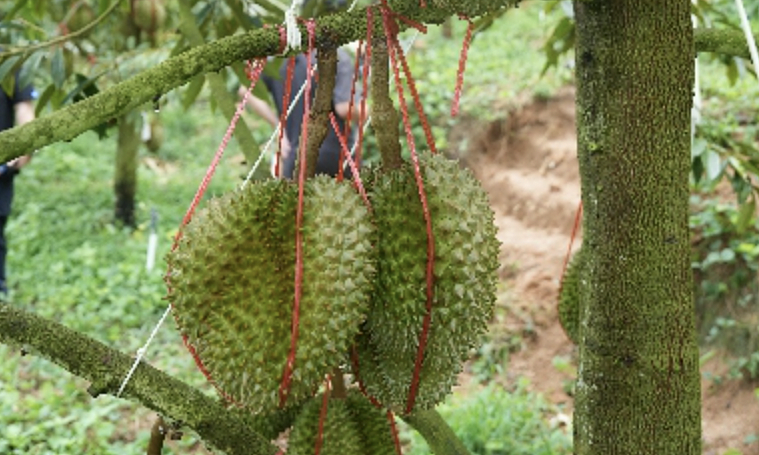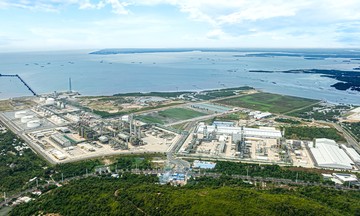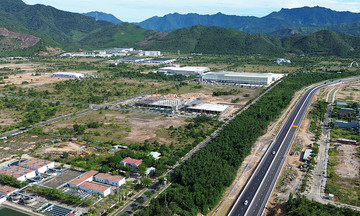Five years ago, some Chinese companies began trial durian cultivation on Hainan Island to reduce reliance on imports and shorten the time it takes to get fresh fruit to consumers.
According to the Hainan Academy of Agricultural Sciences, the cultivated area there has increased almost fourfold in five years, from 700 hectares in 2000 to 2,600 hectares in 2025. On average, China's durian growing area has increased by 30% annually. Durian is grown in Sanya, Baoting, Ledong, and Lingshui regions of Hainan Island, of which about 267 hectares are currently yielding fruit.
Currently, one kilogram of Chinese durian costs about 100 CNY, equivalent to 340,000 VND. Chinese experts expect that as domestic production increases, the price will drop to around 20 CNY per kilogram (70,000 VND), similar to what happened with red grapes and green grapes when they were successfully cultivated. However, to achieve this, they must expand the growing area, overcome climatic barriers, and optimize production technology to lower costs.
China is the main export market for Vietnamese durian. Last year, China imported nearly 7 billion USD worth of durian, of which about 40% (2.94 billion USD) came from Vietnam, according to the Import-Export Department (Ministry of Industry and Trade). Dang Phuc Nguyen, General Secretary of the Vietnam Fruit and Vegetable Association, said that China's durian cultivation does not yet pose a significant threat to Vietnamese growers.
Even if Hainan Island – the only durian growing region in China – expands its cultivation area to the maximum, Nguyen believes the output will still be too low compared to the huge consumption demand of this populous nation.
 |
Domestically grown durian in China during harvest season. Photo: People’s Daily Online |
Domestically grown durian in China during harvest season. Photo: People’s Daily Online
According to Nguyen, the natural conditions in Hainan are only partially suitable for durian. The area is frequently hit by storms and low temperatures, meaning it takes four years for the trees to flower, but they can be wiped out after just one super typhoon.
In addition, high labor and technical costs make production costs two to three times higher than in Vietnam, making it difficult to compete with imports from Southeast Asia. Meanwhile, Vietnamese durian, with its characteristic flavor and competitive price, continues to be favored by consumers. Currently, the price of Vietnamese durian exported to China is around 90,000-150,000 VND per kilogram.
"With low costs, Vietnam can sell durian more cheaply, making it affordable for Chinese consumers," Nguyen said, adding that the risk of Vietnamese durian being overtaken is almost zero.
Sharing the same view, Nguyen Dinh Tung, General Director of Vina T&T, estimated that China's durian output this year is equivalent to more than 80 export containers from Vietnam. According to him, this figure is too small to affect the price.
Speaking to People’s Daily Online, Lang Haibo, Deputy General Director of Hainan Youqi Agricultural Co., Ltd. - one of the durian growers - said that this year's harvest is expected to be around 2,000 tons of ripe fruit. This is almost 40 times higher than the company's first harvest (about 50 tons).
Last year, China imported more than 1.56 million tons of durian. The Hainan government aims to expand the durian growing area to 6,600 hectares by 2028, while applying automatic irrigation technology, AI fruit sorting, and intercropping models to increase productivity. However, analysts say that only when domestic production reaches hundreds of thousands of tons will the impact on the regional market be significant, something unlikely to happen in the short term.
The CEO of Vina T&T predicts that it will take at least 10 more years for China to achieve significant output, and this is the time Vietnam can take advantage of to build a national brand and develop sustainably.
Domestically, the Ministry of Agriculture and Rural Development has issued Decision 3015, applying a separate food safety control process for fresh durian exports. This aims to improve quality and value, creating a long-term competitive advantage for the industry.
Quality has improved significantly, with many batches of exported Vietnamese durian meeting standards on par with Thailand. However, Thai durian, especially the Monthong variety, still holds an advantage thanks to its well-established logistics, large output, and clear branding, with common retail prices of 160,000-200,000 VND per kilogram.
According to businesses, Vietnam's biggest advantage is its lower export price compared to Thailand, creating room to expand market share. To maintain this advantage, the Vietnam Fruit and Vegetable Association recommends that localities and growers continue to invest in growing areas, apply VietGAP and GlobalGAP techniques, improve packaging, and develop a national brand.
Vietnam is accelerating durian exports. In the first three months of the year, monthly export turnover was under 100 million USD. In April, this figure surpassed 100 million USD, and more than doubled in May, tripling in June (300 million USD). In July alone, the export value of Vietnamese durian is estimated to reach 350-400 million USD. After seven months, the export value of this agricultural product has exceeded 1 billion USD.
Thi Ha












